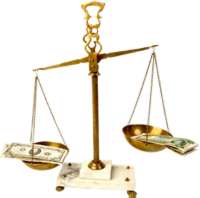
When you receive a set of financial statements, are you able to look at them and gain an understanding of the association's financial position? Or do you, like many people, only look at a few important figures, such as what the association has in cash, investments and replacement reserves, or if the association has net income for the year.
A set of financial statements can provide valuable information if you are knowledgeable about what you are looking for. This will be the first in a series of articles related to financial statements. In the coming months, Association Times will review the income statement, general ledger, and other pertinent reports.
The balance sheet is a picture of the association, reflecting its financial position at a specific point in time. The balance sheet is categorized into three areas: Assets, Liabilities, and Members Equity. The three are always in balance, thus the equation: Assets = Liabilities + Members' Equity (see below).
Assets, such as cash, accounts receivable, property/equipment, and prepaid expenses are items that the association owns.
A liability is an amount the association owes to others, such as vendors, or perhaps even a banking institution for a loan. Liabilities usually include association reserves that are supported by a reserve study.
Member's equity is the association's net worth. Basically, it's what the association owns less what it owes. Member equity is usually divided into Prior Year and Current Year.
The balance sheet provides a cumulative, complete picture of the association. The current year's equity reflected on the balance sheet is the net income or loss being added or subtracted for the year's operations.
What is the value of the balance sheet? How can these figures provide meaningful information? Here are some common ratios that can be applied, using the sample balance sheet below.
Current ratio is a measure of the short-term liquidity of the association. It is measured by:
Current ratio = current assets / current liabilities
= $436,500 / $4,000
= 109 times
We can say that this association has current liabilities covered 109 times over.
Long Term solvency can be measured with the total debt ratio, which addresses the association's long-run ability to meet is obligations.
Total debt ratio = total assets total equity / total assets
= $456,500 - $59,500 / $456,500
= .87 times
What this means is that for every $1 in assets, the association has $.87 obligated to liabilities, which would be the case since most of the cash is allocated to long-term reserves.

The basic concept to remember about the balance sheet is that it provides the basis for evaluating assets versus liabilities and members' equity - - - much the same way an individual would list their personal assets owned versus the liabilities that are attached to those assets.
| Consolidated Balance Sheet December 31, 2002 | ||
|---|---|---|
| Assets | ||
| Current Assets | 12/31/02 | 12/31/01 |
| Cash | $423,000 | $398,000 |
| Accts Receivable | $12,500 | $15,500 |
| Prepaid exp | $1,000 | $500 |
| Total Current Assets | $436,500 | $414,000 |
| Long Term Assets | ||
| Prop/Equip | $25,000 | $15,000 |
| Accum Depreciation | ($5,000 | ($3,000) |
| Total Long Term Assets | $20,000 | $12,000 |
| Total Assets | $456,500 | $426,000 |
| Liabilities | ||
| Current Liabilities | ||
| Accts Payable | $4,000 | $6,000 |
| Total Current Liabilities | $4,000 | $6,000 |
| Long-Term Liabilities | ||
| Long Term Reserves | $393,000 | $354,000 |
| Total Long-Term Liabilities | $393,000 | $354,000 |
| Total Liabilities | $397,000 | $360,000 |
| Members' Equity | ||
| Prior Yrs Equity | $54,000 | $52,500 |
| Current Yr Equity | $5,500 | $1,500 |
| Total Member Equity | $59,500 | $54,000 |
| Total Liabilities and Members' Equity | $456,500 | $414,000 |
Related Articles
- What is an HOA or Homeowner Association?
- How to Start a Neighborhood Association
- HOA Website Can Save Money And Increase Communication
- How Neighborhood Assoc Websites Can Increase Participation
- A Condo Association Website Can Facilitate Communication
- Neighborhood Watch-How to Start One!
- Utilizing a Neighborhood Watch Website
- An Effective Meeting Agenda
- Funding a Reserve Study
- HOA Maintenance - Who Has Responsibility for What?
- Budget Preparation Tips
- Directory of Association Articles
 Print
Print Email
Email







